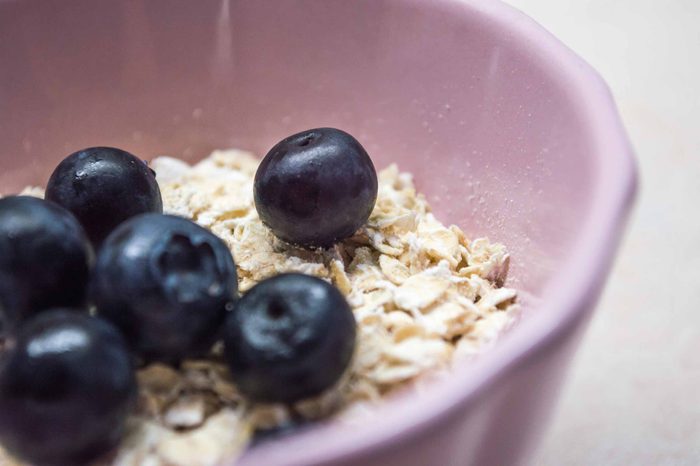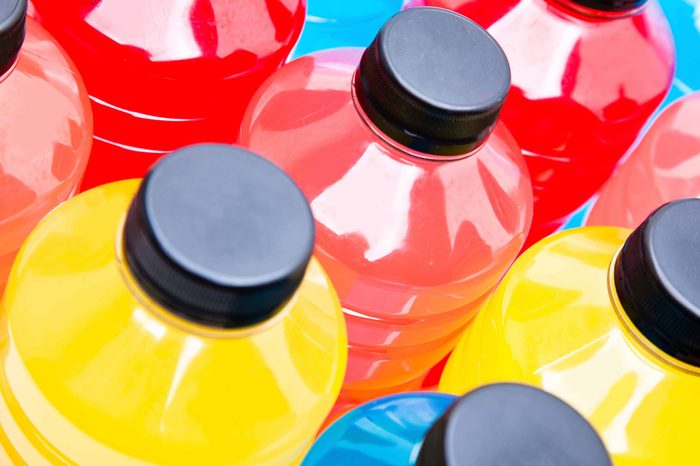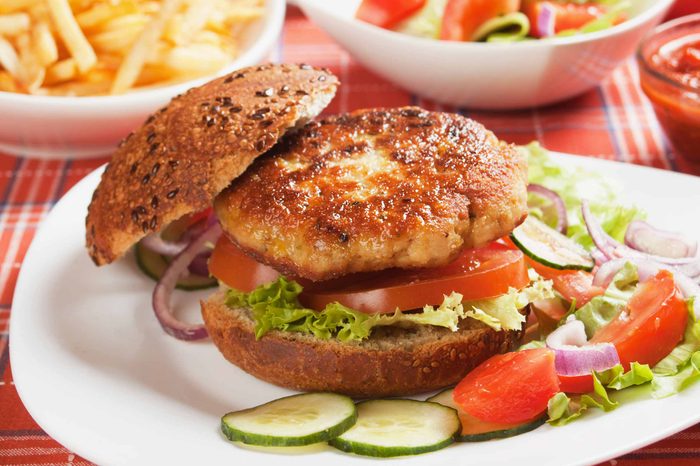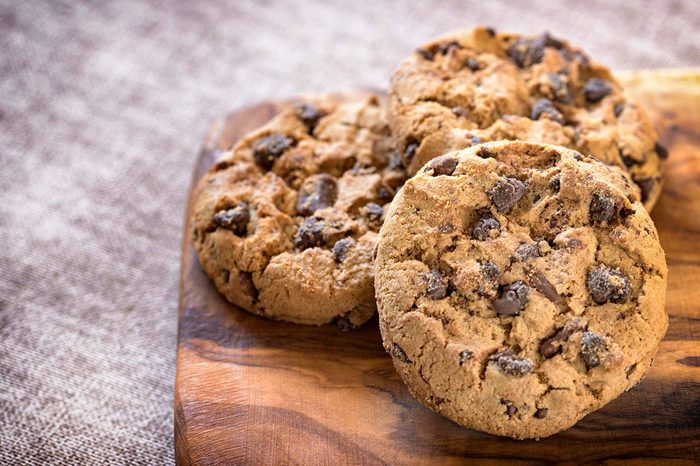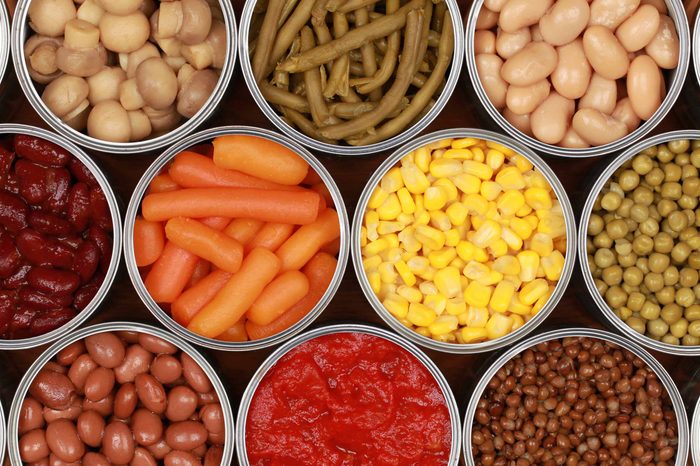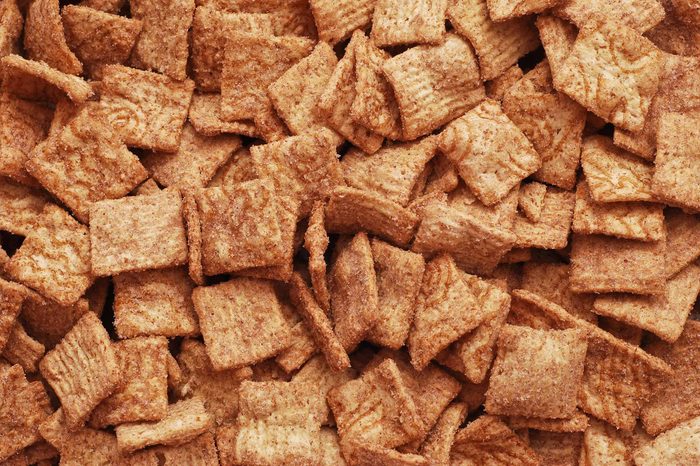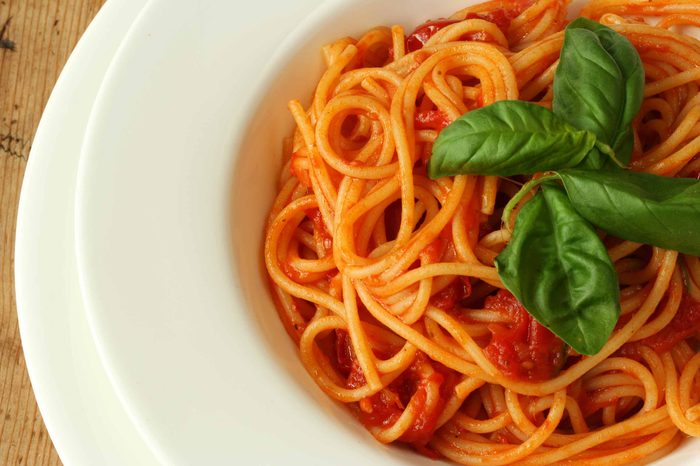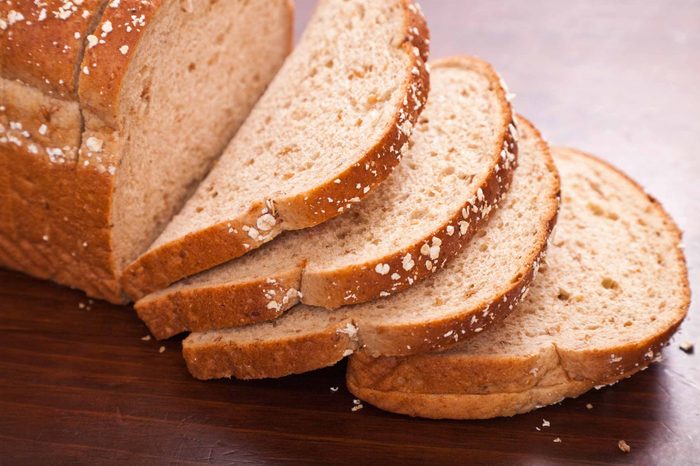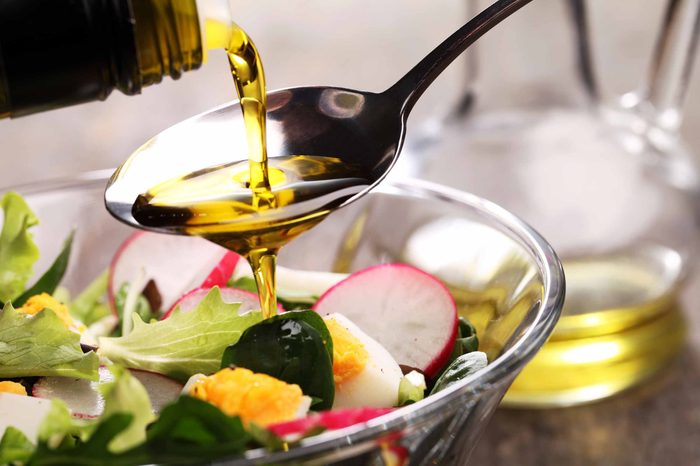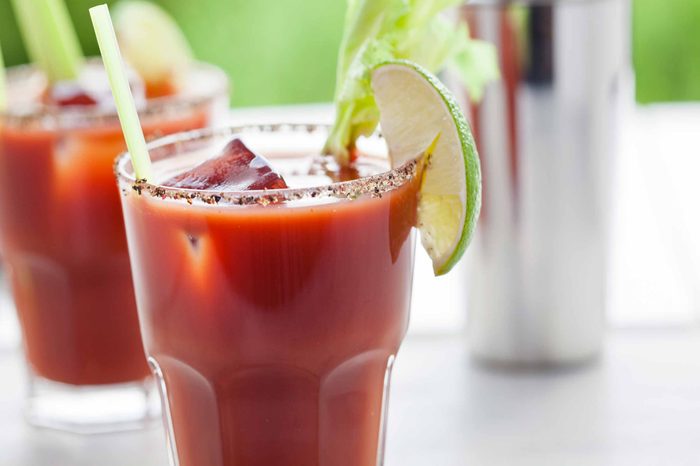Cookies
When satisfying a sweet tooth, you’re probably more worried about sugar than salt. “But just because a product is sweet doesn’t mean it’s not high in sodium,” Coughler says. Besides the packaged baked goods we may toss in our shopping cart, Coughler cautions us to watch for sneaky high-sodium sources, such as “healthy” versions of cookies and brownies.
7 Surprisingly Decadent Recipes That Can Help Lower Cholesterol
Canned veggies
When canned goods are on sale at your supermarket, it’s tempting to stock up on the veggies and beans, but that may not be the best strategy—they’re actually high in sodium. “Buying these items fresh or frozen without added salt is a better option,” says Ashvini Mashru, RD, of Wellness Nutrition Concepts in Malvern, PA. “But if you want to stick to cans, look for ‘no salt added’ or ‘reduced-sodium’ varieties.” If full-salt is your only option, drain and rinse the veggies or beans thoroughly with cold water before eating or cooking them. With a can of Del Monte’s Blue Lake Whole Green Beans, for example, draining and rinsing might save you 200 mg of sodium.
iStock/Eva Katalin Kondoros
Cheese
We cube it, slice it, shred it, melt it, and sprinkle it on a variety of foods because, well, what’s not to love about cheese? Short answer: Salt, one of its basic ingredients. It keeps bacteria in check, controls moisture, acts as a preservative, and improves the texture and taste. Some varieties are saltier than others. For example, a 1-ounce serving of feta has about 320 mg of sodium, whereas blue cheese has about 325 mg per ounce, and pasteurized processed cheese has a whopping 420 mg per ounce. You can certainly opt for lower-sodium cheese (such as Swiss, goat, ricotta, and fresh mozzarella) or look for soft cheeses, which generally have lower sodium than hard cheeses. When you cook with cheese, spare the salt shaker, because cheese is a salty enough ingredient on its own.
I Ate Cheese Every Day for a Week—Here’s What Happened























